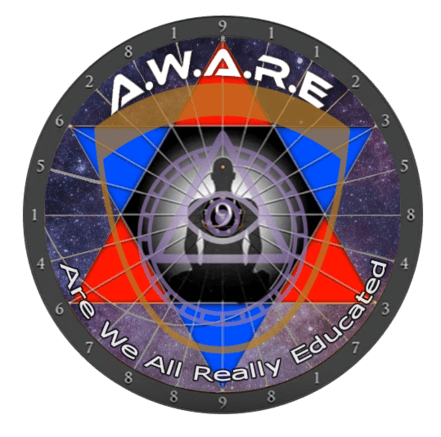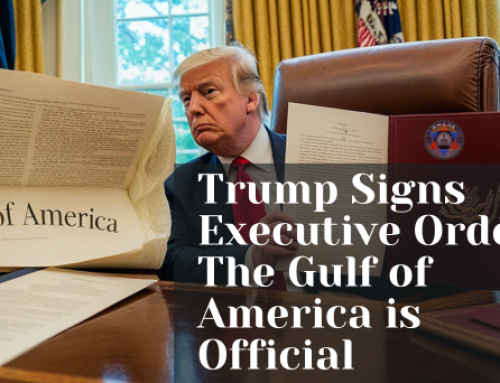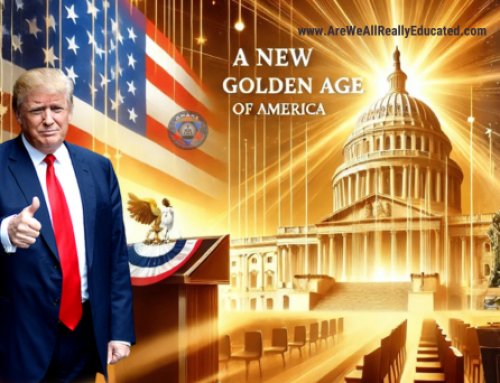Public Vehicular Travel “As A Matter of Right” –
Florida § 633.021 Definitions:
(14) “Highway” means every way or place of whatever nature within the state open to the use of the public, as a matter of right, for purposes of vehicular traffic and includes public streets, alleys, roadways, or driveways upon grounds of colleges, universities, and institutions and other ways open to travel by the public…
Florida § 633.102 Definitions:
(16) “Highway” means every way or place of whatever nature within the state open to the use of the public, as a matter of right, for purposes of vehicular traffic and includes public streets, alleys, roadways, or driveways upon grounds of colleges, universities…
Arizona – § 42 5062(A): 5
“Public highway” means any way or place in this state that is constructed or maintained with public monies and that is open to use by the public, as a matter of right, for the purpose of vehicular travel, including a highway under construction.
Colorado – § 33-14-101. Definitions:
(12) “Street”, “road”, “freeway”, or “highway” means the entire right-of-way between boundary lines of any of such public ways when any part thereof is open to the use of the public, as a matter of right, for the purpose of motor vehicle travel.
Colorado – § 155-3. Definitions:
“Public Right-of-Way” All streets, roadways, sidewalks, alleys and all other areas reserved for present or future use by the public, as a matter of right, for the purpose of vehicular or pedestrian travel, utility installation and for snow storage by the Town of Frisco.
[Amended 5-2-1989 by Ord. No. 89-16]
Delaware – Title 21, Part I, Ch.1 General Provisions, § 101. Words and phrases.
(22) “Highway” means the entire width between boundary lines of every way or place of whatever nature open to the use of the public, as a matter of right, for purposes of vehicular travel…
Iowa § 321G.1 Definitions:
20. “Street” or “highway” means the entire width between property lines of every way or place of whatever nature when any part thereof is open to the use of the public, as a matter of right, for purposes of vehicular travel, except in public areas in which the boundary shall be thirty-three feet each side of …
Idaho – § 49.301
(13) Street or Highway Street or Highway means the entire width between property lines of every way or place of whatever nature when any part thereof is open to the use of the public, as a matter of right, for purposes of vehicular traffic.
Idaho – § 63-2401. Definitions
(12) “Highways” means every place of whatever nature open to the use of the public, as a matter of right, for the purpose of vehicular travel which is maintained by the state of Idaho…
New Mexico – State v. Roddy Brennan, 1998-NMCA-176, filed 10/22/98 NM Ct. of Appeals:
“Highways as defined in the Motor Vehicle Code include “every way or place generally open to the use of the public, as a matter of right, for the purpose of vehicular travel.”
Minnesota § 169.01 Definitions.
“Street or highway” means the entire width between boundary lines of any way or place when any part thereof is open to the use of the public, as a matter of right, for the purposes of vehicular traffic.
New York state – Article 21 General Provisions: § 21.05 Definitions.
9. “Highway” shall mean the entire width between the boundary lines of any way or place thereof is open to the use of the public, as a matter of right, for the purpose of vehicular traffic.
North Carolina § 20-4.01(13)
“Highway” is defined as “the entire width between property or right-of-way lines of every way or place of whatever nature, when any part thereof is open to the use of the public, as a matter of right, for the purposes of vehicular traffic. The terms “highway” and “street” and their cognates are synonymous.
Oregon Vehicle Code § 801.305
“Highway” means every public way, road, street, thoroughfare and place, including bridges, viaducts and other structures within the boundaries of this state, open, used or intended for use of the general public, for vehicles or vehicular traffic, as a matter of right.
Pennsylvania § 75 Pa.C.S.A. §3101 and 75 Pa.C.S.A. §102.
“Trafficway. The entire width between property lines or other boundary lines of every way or place which is open to the public, for purposes of vehicular travel, as a matter of right or custom.”
Texas § 114.001. Definitions:
(5) “Public highway” means a way or place of whatever nature open to the use of the public, as a matter of right, for the purpose of vehicular travel, even if the way or place is temporarily closed for the purpose of construction, maintenance, or repair.
South Dakota § 32-14-1. Terms used in chapters 32-14 to 32-19 inclusive mean:
(11) “Highway” the entire width between the boundary lines of every way publicly maintained when any part thereof is open to the use of the public, as a matter of right, for purposes of vehicular travel.
Utah – § 23-13-2 & R657-5-2 & § 41-6a-102. Under Definitions: (20)
(6) “Highway” means the entire width between property lines of every way or place of any nature when any part of it is open to the use of the public, as a matter of right, for vehicular travel.
Utah – § 16-2-1. Definitions:
(1) “Roadway” or “Street” means the entire width between property lines of every way or place of any nature when any part of it is open to the use of the public, as a matter of right, for vehicular traffic.
Wisconsin 340.01 (22) “Highway”
Means all public ways and thoroughfares and bridges on the same. It includes the entire width between the boundary lines of every way open to the use of the public as a matter of right for the purposes of vehicular travel.
Nebraska Revised Statutes: Section 39-741, 1943
” ‘(5) The term “highway” includes every way or place of whatever nature open to the use of the public, as a matter of right, for the purposes of vehicular travel, but shall not be deemed to include a roadway or driveway upon grounds owned by private persons, colleges, universities or other institutions.'”
Municipal Code in other states:
Santa Barbara County, CA § 9.04.030 Definitions.
F. “Street.” A way or place, of whatever nature, open to the use of the public, as a matter of right, for the purpose of vehicular travel or in the case of a sidewalk thereof for pedestrian travel.
City of Glendale, CA – § 9.04.030 Definitions.
“Street” means a way or place, of whatever nature, open to the use of the public, as a matter of right, for vehicular travel or, in the case of a sidewalk, for pedestrian travel.
Park County, CO – § 4-200B Definitions.
Right-of-way: All streets, roadways, sidewalks, alleys, and all other areas reserved for present or future use by the general public, as a matter of right, for the purpose of vehicular or pedestrian travel…
Brighton, CO – § IX, Subdivision Regulations, § VI Definitions. B.
Right-of-Way, Public. All streets, roadways, bikeways, sidewalks, alleys, and all other areas reserved for present or future use by the public, as matter of right, for the purpose of vehicular or pedestrian travel.
Blanca, CO – Article I. In General, § 1-1. Definitions.
Right-of-way, public shall mean all street, roadways, sidewalks, alleys and all other areas reserved for present or future use by the public, as a matter of right, for the purpose of vehicular or pedestrian travel.
Dillon, CO – § 8-3-20. Definitions
Street, road or highway means the entire right-of-way between boundary lines of any such public ways when any part thereof is open to the use of the public, as a matter of right, for the purposes of motor vehicle travel.
Pueblo, CO – § 17.04.040 Definitions
“Right-of-Way, Public” means all streets, roadways, sidewalks, alleys, and all other areas reserved for present or future use by the public, as a matter or right, for the purpose of vehicular or pedestrian travel.
Boise, ID – § 10-01-01 Definitions of words and phrases:
Street or Highway: The words “Street or Highway” shall be used interchangeably and shall mean the entire width between the boundary lines of every way or place open to the public, as a matter of right, for public vehicular travel but not to include alleys.
Haley, ID – § 9.08.010 Definitions.
A. “Streets” means a way or place, of whatsoever nature, open to the use of the public, as a matter of right, for purposes of vehicular travel.
Haley, ID – § 10.24.020 Definitions.
“Highway” means any way or place of whatever nature open to the use of the public, as a matter of right, for the purposes of vehicular travel or parking of motor vehicles which is maintained by the state or some taxing subdivision or unit thereof…
Topeka, KS – Ordinance 19989 – Article 1 – Definitions:
Highway. Every way or place of whatever nature open to the use of the public as a matter of right for the purpose of vehicular travel.
Ramsey, MN – § 6.04.03 Definitions:
“Street or Highway” shall mean the entire width between boundary lines of any way or place when any part thereof is open to the use of the public, as a matter of right, for the purpose of vehicular traffic (includes the right-of-way or boulevard).
Rochester, MN – City Ordinances – Chapter 134 – 134.01 Definitions: Subd. 23.
“Street or Alley” means the entire width between boundary lines of any way or place when any part thereof is open to the use of the public, as a matter of right, for purposes of vehicular traffic. The term “street” specifically includes highway.
Diamondhead, MS – Ordinance No.2013-039 Definitions:
(39) “Street” means a way or place, of whatsoever nature, open to the use of the public as a matter of right for the purposes of vehicular travel.
Minden, NE – Article IV – Sec 50-53 Definitions:
“Street” is a way or place of whatsoever nature open to the use of the public as a matter of right for purposes of vehicular travel…
Clark County, NV – § 5.02.010 Definitions:
(39) “Street” means the surface, the air space above the surface and the area below the surface of the full width of the right-of-way, including sidewalks and thoroughfares, places or ways of any kind used by the public or open to the public, as a matter of right, for the purposes of vehicular traffic or vehicular and pedestrian traffic.
Allentown, PA – Codified Ordinances – Part 5- Title 3 – Article 527.01 Definitions:
1. “Street”means every way or place of whenever nature, within the City, open to the use of the public as a matter of right, for purpose of vehicular travel
West Earl Township, PA – Code of Township of West Earl – Part II
General Legislation – Chapter 78 § 78-3. Definitions:
B. Street – A way of place, of whatever nature, open to the use of the public as a matter of right for purposes of vehicular travel…
Lindon, UT – § 9.22.020 Definitions:
As a type of public place, a street is a way or place, of whatever nature, open to the use of the public, as a matter of right, for purposes of vehicular travel or in the case of a sidewalk thereof for pedestrian travel.
Revised Code of Washington 36.75.010 – Definitions
(11) “Highway,” every way, lane, road, street, boulevard, and every way or place in the state of Washington, open as a matter of right to public vehicular travel both inside and outside the limits of incorporated cities and towns;
“No state shall convert a liberty into a license, and charge a fee therefore.”
Murdock v. Pennsylvania, 319 U.S. 105
“The object of a license is to confer a right or power, which does not exist without it.”
Blatz Brewing Co. v. Collins, 160 P.2d 37, 39; 69 Cal. A. 2d 639.
“A license is a privilege granted by the state” and “cannot possibly exist with reference to something which is a Right…to ride and drive over the streets”.
City of Chicago v Cullens, et al, 51 N.E. 907, 910, etc. (1906)
“Statutes that violate the plain and obvious principles of common Right and common reason are null and void.”
Bennett v. Boggs, 1 Baldw 60
“If [state] officials construe a vague statute unconstitutionally, the citizen may take them at their word, and act on the assumption that the statute is void.”
Wingfield v. Fielder 2d Ca. 3d 213 (1972).
“Persons faced with an unconstitutional licensing law which purports to require a license as a prerequisite to exercise of right… may ignore the law and engage with impunity in exercise of such right.”
People v. Battle
“If the State converts a right (liberty) into a privilege, the citizen can ignore the license and fee and engage in the right (liberty) with impunity.”
Shuttlesworth v. City of Birmingham, Alabama, 373 U.S. 262 (1963)
“Where rights secured by the Constitution are involved, there can be no rule making or legislation which would abrogate them.”
Miranda vs. Arizona, 384 US 436, 491
“The State cannot diminish rights of the people.”
Hertado v. California, 110 U.S. 516.
“The claim and exercise of a constitutional Right cannot be converted into a crime.”
Miller vs. U.S., 230 F. 486, 489
“There can be no sanction or penalty imposed upon one because of this exercise of Constitutional rights.”- Sherar v. Cullen, 481 F. 2d 945.
“The streets of a city belong to the people of the state, and the use thereof is an inalienable right of every citizen…”
19 Cal.Jur. 54, § 407.
“The right to travel is a well-established common right that does not owe its existence to the federal government. It is recognized by the courts as a natural right.”
Schactman v. Dulles 96 Appellate DC 287, 225 F2d 938, at 941.
“With regard particularly to the U.S. Constitution, it is elementary that a Right secured or protected by that document cannot be overthrown or impaired by any state police authority.”
Shuttlesworth v. Birmingham 394 U.S. 147 (1969).
“Those who have the right to do something cannot be licensed for what they already have right to do as such license would be meaningless.”
Bouvier’s Law Dictionary, 1914, p. 2961
“RIGHT – A legal Right, a constitutional Right means a Right protected by the law, by the constitution, but government does not create the idea of Right or original Rights; it acknowledges them.“
Escobedo v. State 35 C2d 870 in 8 Cal Jur 3d p.27
“The use of the automobile as a necessary adjunct to the earning of a livelihood in modern life requires us in the interest of realism to conclude that the RIGHT to use an automobile on the public highways partakes of the nature of a Liberty within the meaning of the Constitutional guarantees. . .”
Caneisha Mills v. D.C. 2009
—-
“Personal liberty, or the right to the enjoyment of life and liberty, is one of the fundamental or natural rights, which has been protected by its inclusion as a guaranty in the various constitutions, which is not derived from, or dependent on, the federal Constitution, and which may not be submitted to a vote and may not depend on the outcome of an election. It is one of the most sacred and valuable rights; as sacred as the right of private property; or as occupying a preferred position as contrasted with property rights; and is regarded as inalienable.”
16 C.J.S., Constitutional Law, § 202, p. 987: (Corpus Juris Secundum)
“Personal liberty largely consists of the right of locomotion, to go where and when one pleases, only so far restrained as the rights of others may make it necessary for the welfare of all other citizens. The right of a citizen to travel upon the public highways and to transport his property thereon, by horse-drawn carriage, wagon, or automobile, is not a mere privilege which may be permitted or prohibited at will, but a common right which he has under his right to life, liberty, and the pursuit of happiness. Under this constitutional guaranty one may, therefore, under normal conditions, travel at his inclination along the public highways or in public places, and while conducting himself in an orderly and decent manner, neither interfering with nor disturbing another’s rights, he will be protected, not only in his person, but in his safe conduct.”
II Am.Jur. (1st) Constitutional Law, § 329, p.1135 (American Juris Prudence)
“Personal liberty – Consists of the power of locomotion, of changing situations, of removing one’s person to whatever place one’s inclination may direct, without imprisonment or restraint unless by due process of law.”
Bovier’s Law Dictionary, 1914 ed., Black’s Law Dictionary 5th ed. Blackstone’s Commentary 134; Hare Constitution, Pg. 777
—-
“The right of the Citizen to travel upon the public highways and to transport his property thereon, in the ordinary course of life and business, is a common right which he has under the right to enjoy life and liberty, to acquire and possess property, and to pursue happiness and safety. It includes the right, in so doing, to use the ordinary and usual conveyances of the day, and under the existing modes of travel, includes the right to drive…”
Thompson vs. Smith, supra.; Teche Lines vs. Danforth, Miss., 12 S.2d 784 (1943).
“The use of the highways for the purpose of travel and transportation is not a mere privilege, but a common and fundamental Right, of which the public and the individual cannot be rightfully deprived.”
Chicago Motor Coach vs. Chicago, 169 NE 22?1; Ligare vs. Chicago, 28 NE 934; Boon vs. Clark, 214 SSW 607; 25 Am.Jur. (1st) Highways Sect.163
“The right to operate a motor vehicle upon the public streets and highways is not a mere privilege, it is a right or liberty, the enjoyment of which is protected by the guarantees of the federal and state constitutions.”
Adams v City of Pocatello, 416 P.2d 46, 48.
“It cannot be gainsaid that citizens have a right to drive upon the public streets of the District of Columbia or any other city absent a constitutionally sound reason for limiting their access.”
Elrod v. Burns, 427 U.S. 347, 373, 96 S.Ct. 2673, 49 L.Ed.2d 547 (1976)
“The RIGHT of the citizen to DRIVE on the public street with freedom from police interference, unless he is engaged in suspicious conduct associated in some manner with criminality is a FUNDAMENTAL CONSTITUTIONAL RIGHT which must be protected by the courts.”
Simeone v. Lindsay, 65 Atl. 778, 779; Hannigan v. Wright, 63 Atl. 234, 236.
“A traveler has an equal right to employ an automobile as a means of transportation and to occupy the public highways with other vehicles in common use.”
Adams v. City of Pocatello, 416 P.2d 46, 48; 91 Idaho 99 (1966).
“The right to travel is so fundamental that it appears in the Articles of Confederation, which governed our society before the Constitution.”
Donnolly vs. Union Sewer Pipe Co., 184 US 540; Lafarier vs. Grand Trunk R.R. Co., 24 A. 848; O’Neil vs. Providence Amusement Co., 108 A. 887.
U.S. Supreme Court decisions:
“Where rights secured by the Constitution are involved, there can be no rule making or legislation which would abrogate them.”
Miranda vs. Arizona, 384 US 436, 491
“The State cannot diminish rights of the people.”
Hertado v. California, 110 U.S. 516.
“The claim and exercise of a constitutional Right cannot be converted into a crime.”
Miller vs. U.S., 230 F. 486, 489
“Undoubtedly the Right of locomotion, the Right to remove from one place to another according to inclination, is an attribute of personal liberty, and the Right, ordinarily, of free transit from or through the territory of any state is a Right secured by the Fourteenth Amendment and by other provisions of the Constitution.”
Williams v. Fears, 343 U.S. 270, 274
A citizen may have, under the Fourteenth Amendment, the right to travel and transport his property upon them by auto vehicle. But he has no right to make the highways his place of business by using them as a common carrier for hire. Such use is a privilege which may be granted or withheld by the state in its discretion, without violating either the due process clause or the equal protection clause.
Packard v. Banton, 264 U.S. 140, 144[.] and Buck v. Kuykendall, 267 U.S. 307, 314 (1925).
“The assertion of federal rights, when plainly and reasonably made, is not to be defeated under the name of local practice.”- Davis v. Wechsler, 263 U.S. 22, 24.
“The right to travel is a part of the liberty of which the citizen cannot be deprived without due process of law under the 5th Amendment.”
Kent v Dulles, 357 U.S. 116, 125.
40.01 (22) of the [Wisconsin]Vehicle Code which, in its definitions of words and phrases, states:
“`Highway’ means all public ways and thoroughfares and bridges on the same. It includes the entire width between the boundary lines of every way open to the use of the public as a matter of right for the purposes of vehicular travel….”
Weiss v. Holman, 207 NW 2d 660 – Wis: Supreme Court 1973
Sec. 12-465. Definitions
“Public highways’ includes every way or place generally open to the use of the public as a matter of right for the purposes of vehicular travel….
Wamphassuc Pt. Prop. Owners Assn. v. Public Utilities Commission, 154 Conn. 674 – Conn: Supreme Court 1967
Sec 75-1102, subd. C is a portion of the Motor Fuel Tax Law, public highways are defined as:
“The term `public highways’ shall mean and include every way or place of whatever nature, generally open to the use of the public as a matter of right, for the purposes of vehicular travel, and notwithstanding that the same may be temporarily closed for the purpose of construction, reconstruction, maintenance or repair.” Identical provision also appears in Section 75-1201(c).
Camden v. Harris, 109 F. Supp. 311 – U.S. Dist. Court, WD Arkansas 1953
“Although “highway” has a broad meaning (basically including any street, city or rural), the purposes of a highway, as used in the statutory definition, are limited. In defining highway, the statute refers to “every way open to the use of the public as a matter of right for the purposes of vehicular travel. It includes those roads … opened to the use of the public for the purpose of vehicular travel.” Wis.Stat. § 340.01(22)
Schultz v. Frisby, 807 F. 2d 1339 – U.S. Court of Appeals, 7th Circuit 1986
“We hold, therefore, that a random stop of a motorist in the absence of specific articulable facts which justify the stop by indicating a reasonable suspicion that a violation of the law has occurred is constitutionally impermissible and violative of the Fourth and Fourteenth Amendments to the United States Constitution. It follows that a random stop solely for the purpose of a documents check is an unreasonable and unconstitutional detention of those in the stopped vehicle…”
STATE v. PROUSE 382 A.2d 1359, 1364 (Del. 1978)
The right to travel means, of course, the right to go from one place to another. It includes the right (1) to start, (2) to go forward on the way, and (3) to stop when the traveler’s destination has been reached. To speak to the first two of these as fundamental rights without including the third would be to descend again to the absurd, and so far as the instant case is concerned that is what we have here. But we do not so limit the right. We affirm that it includes the right to stop on the way, temporarily, for a legitimate or necessary purpose when that purpose is an immediate incident to travel. So it is that the texts and authorities declare that the right to stop when the occasion demands is an incident to the right to travel, a proposition so completely self-evident that no authority is necessary to sustain it, and which we would pronounce irrefutable, had it never heretofore been mentioned.
2 Blashfield Automobile Law, Perm. Ed., sec. 1191, p. 321; Fulton v. Chouteau County Farmers’ Co., 98 Mont. 48, 37 P.2d 1025; Morton v. Mooney, 97 Mont. 1, 33 P.2d 262, 263; Albrecht v. Waterloo Const. Co., 218 Iowa, 1205, 257 N.W. 183.
The RIGHTS aforesaid, being fundamental, are constitutional rights, and while the exercise thereof may be reasonably regulated by legislative act in pursuance of the police power of the state, and although those powers are broad, they do not rise above those privileges which are imbedded in the constitutional structure. The police power cannot justify the enactment of any law which amounts to an arbitrary and unwarranted interference with, or unreasonable restriction on, those rights of the citizen which are fundamental.
State v. Armstead, 103 Miss. 790, 799, 60 So. 778, Ann. Cas. 1915B, 495.
An administrative regulation, of course, is not a “statute.” A traveler on foot has the same right to use of the public highway as an automobile or any other vehicle.
U.S. v Mersky (1960) 361 U.S. 431
“The right to travel freely from State to State … is a right broadly assertable against private interference as well as governmental action. Like the right of association, it is a virtually unconditional personal right, guaranteed by the Constitution to us all.”
Paul v. Virginia U.S. Supreme Court
– Other Courts –
” The appellant points out that § 39-741(5), 1960 Reissue of Volume 3, Revised Statutes of Nebraska of 1943, defines the term “highway” to mean “* * * every way or place of whatever nature open to the use of the public, as a matter of right, for the purposes of vehicular travel… and that the Nebraska court has adopted this definition in connection with automobile litigation”
Solomon Dehydrating Company v. Guyton, 294 F. 2d 439 – Court of Appeals, 8th Circuit 1961
“Undoubtedly the right of locomotion, the right to remove from one place to another according to inclination, is an attribute of personal liberty, and the right, ordinarily, of free transit from or through the territory of any State is a right secured by the l4th Amendment and by other provisions of the Constitution.
Schactman v Dulles, 96 Appellate D.C. 287, 293.
“There can be no sanction or penalty imposed upon one because of this exercise of constitutional Rights.”
Snerer vs. Cullen, 481 F. 946
“Heretofore the court has held, and we think correctly, that while a Citizen has the Right to travel upon the public highways and to transport his property thereon, that Right does not extend to the use of the highways, either in whole or in part, as a place of business for private gain.”
Willis vs. Buck, 263 P. l 982; Barney vs. Board of Railroad Commissioners, 17 P.2d 82
“… For while a Citizen has the Right to travel upon the public highways and to transport his property thereon, that Right does not extend to the use of the highways, either in whole or in part, as a place for private gain. For the latter purpose, no person has a vested right to use the highways of the state, but is a privilege or a license which the legislature may grant or withhold at its discretion.”
State vs. Johnson, 243 P. 1073; Cummins vs. Homes, 155 P. 171; Packard vs. Banton, 44 S.Ct. 256; Hadfield vs. Lundin, 98 Wash 516
“The Right of the Citizen to travel upon the public highways and to transport his property thereon, either by horse drawn carriage or by automobile, is not a mere privilege which a city can prohibit or permit at will, but a common Right, which he has under the Right to life, liberty, and the pursuit of happiness.”
Thompson vs. Smith, 154 SE 579
‘The right of a citizen to travel upon the highway and transport his property thereon, in the ordinary course of life and business, differs radically and obviously from that of one who makes the highway his place of business and uses it for private gain, in the running of a coach or omnibus. The former is the usual and ordinary right of a citizen, a common right, a right common to all, while the latter is special, unusual and extraordinary….”
Ex parte Dickey (Dickey v. Davis) 76 W.Va. 576, L.R.A. 1915 F, 840, P.U.R. 1915 E, 93, 85 S.E. 781
“The distinction between the right of a citizen to use the public highways for private, rather than commercial purposes is recognized.”
Barbour v. Walker, 126 Okla. 227, 259 Pac. 552, 56 A.L.R. 1049, 1053
“However, a right as precious as the freedom of an individual who has not violated any law to travel wherever he pleases without interruption should not be denied construction not impairing such right is possible.”
People v. Utsman, 166 N.Y.S. (2d) 358 (1957))
“First, it is well established law that the highways of the state are public property, and their primary and preferred use is for private purposes, and that their use for purposes of gain is special and extraordinary which, generally at least, the legislature may prohibit or condition as it sees fit.”
Stephenson vs. Rinford, 287 US 251; Pachard vs Banton, 264 US 140,








Leave A Comment